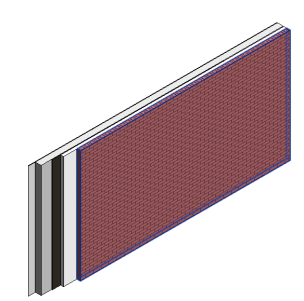Divide building model elements into discrete parts that can be independently scheduled, tagged, filtered, and exported.
- Modify tab
 Create panel
Create panel 
 (Create Parts)
(Create Parts)

Divide building model elements into discrete parts that can be independently scheduled, tagged, filtered, and exported.
 Create panel
Create panel 
 (Create Parts)
(Create Parts) 